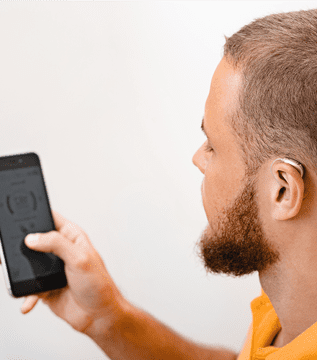
Article
How Design Can Improve Ratings for Medical Device Apps
This post was previously on the Pathfinder Software site. Pathfinder Software changed its name to Orthogonal in 2016. Read more.
In part one of this series, I wrote about how mobile should be central to your development strategy because of the major shift that is happening to people’s computing habits. In part two, I cover key characteristics you need to consider in determining what you should (and shouldn’t) build. In part three, I will cover the opportunities this presents.
The wrong answer is to take all of your existing applications and literally move every single thing over onto iPhone, iPad or Android If you do this, you’re wasting your time and money, disappointing your customers, and ceding opportunities to your competitors.
To make the best use of mobile, you need to look at why mobile is different from the desktop for your customers, and look for opportunities in those differences:
A laptop computer wants to be a desktop. It’s most often used in a seated position in relative privacy at a desk or table, at home, in the office or perhaps at a coffee shop, with a persistent connection to power, a network and a printer. They’re pretty good devices for that purpose, especially when fitted out with multiple large screens. Using a laptop for anything outside of that context reveals its limitations. They’re just not ergonomic when you’re not sitting at a desk or a table. That’s why people don’t use them much outside of that context.
This may be stating the obvious, but mobile computing is just that – mobile. Mobile devices are designed for mobile use, and that’s how people use them. You cary your smartphone with you and use it sitting, standing, lying down, walking, running, almost anywhere. Modern smartphones and tablets are designed for just that: instant on, always connected, all day battery life, and usable standing, sitting, walking, lying down.
When you’re on the go, portability is more important than size. You carry it in your pocket, pull it out when you need it, use it with one hand, put it back. The ability to do this constrains the size of the device, and thus the size of the screen.
But even though you are making compromises on screen size, maximizing screen size within that form factor is of paramount importance.
That’s one reason why touch dominates in mobile, and why chrome-less interfaces (in which navigation, borders, toolbars, controls etc. are hidden until accessed by a gesture) are preferred on touch devices. Both of these create more usable screen real estate when you need it.
Touch has other consequences – while you can build apps that mimic familiar keyboard and mouse interactions, those need to be modified. But touch allows for many other types of interactions – it’s essentially a blank canvas with inputs ranging from multitouch gestures to voice to tipping to shaking to bumping to pointing the device at something available. This opens up a whole new set of interface possibilities, as can be seen in apps like Smule Magic Piano, various musical instrument emulators, games, bump or drawing apps.
Since mobile devices are almost always with you, time and location can provide very valuable context for your applications. And because you can so easily and instantly share, social becomes an important part of the context as well.
What has this led to? Music recognition services like Shazaam; location centered apps like Foursquare, comparison shopping via in store barcode scanning from Amazon, time and location capture built into many more applications, weather for where you are, the start of augmented reality apps, just to name a few.
As Luke Wroblewski puts it: “When you design for mobile you are designing something that can be used anywhere, anytime, and be instantly shared/discussed with other people.”
You add all of these things together, and you end up with devices that are much more personal than a computer. Always on, always with you, always connected, always convenient, always collecting data and providing feedback on the world around you, storing your information.
They fit into (and alter) your lifestyle. They are lifestyle devices, in the most powerful sense of that phrase. This is true if you are using it for work or not.
That makes mobile much more powerful than desktop ever was.
Your customers are used to having web apps, desktop apps and mobile apps. They expect to work with the same data everywhere, with experiences tailored to the device and the context, whether it’s an iPad, an android phone or a laptop.
So now that we’ve covered how mobile is different, what opportunities does mobile present you, and how do you go about figuring out what you should build? That’s what’s next in Part 3.
Related Posts

Article
How Design Can Improve Ratings for Medical Device Apps

Article
Bluetooth Trends in Smartphones: Effects on Medical Devices

Article
Developing Cross-Platform Medical Device Apps with Flutter

Article
CBI Mobile Medical Apps Summit 2015